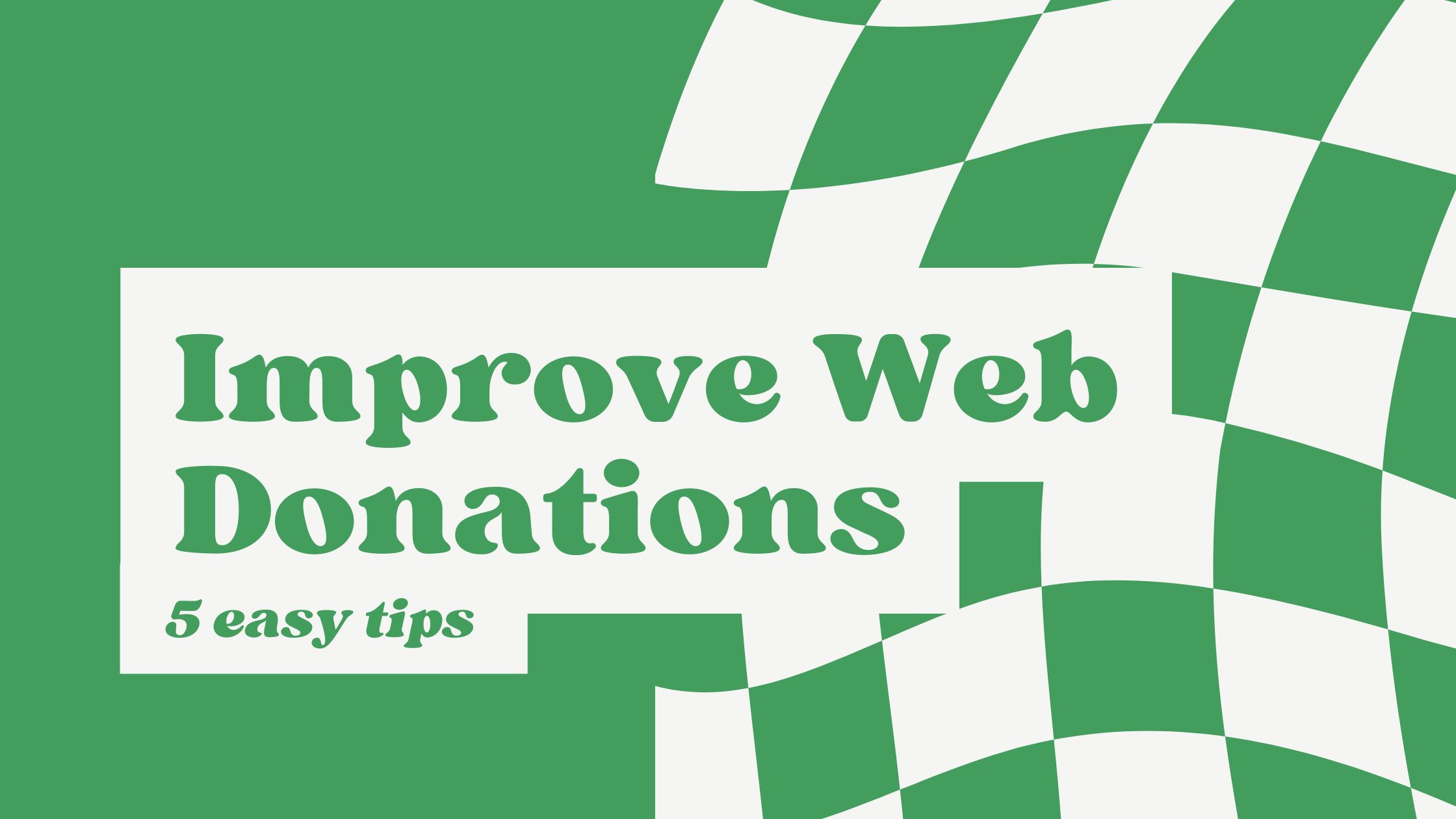PSA Your donation process is too confusing

Today I want to talk about one of the most important elements of your online presence as a charity - your donation process. An active email list, viral social media content and regular media coverage are all great, but if you don’t have your donation process down - it could all be for naught. But never fear, we’re going to walk through 5 key areas to look at in order to upgrade the donation process for your charity.
1. A donation page on your website
This is super important and hopefully already the case. If you don’t have one clear page dedicated to bringing a user through the journey of making a donation, put down that coffee, bookmark this article for a later date and call your web team to ask them nicely for a new page on your charity’s website. If you already have a dedicated donation page, give yourself a pat on the back.
This should be the one place on your website that a user can donate. If a user is anywhere else on your website, there should be a clear button directing them to ‘donate now’ which takes them to the donation page.
A donation page should include
- Images and/or video
- Clear and compelling copy
- CTAs through to donate
- An easy payment process
2. Clear and Compelling Copy
A common mistake charities make is having little or no copy included on the donation page. They assume that if a user has landed on the donation page that they don’t need any further persuasion to make a donation. I would disagree here and say that, in fact the donation page is the most important page on your charity’s website and the copy included on this page might have to work harder than any other copy to bring potential donors over any last hurdles and get them to commit to a donation. The text on this page should be clear and informative. A user should be able to answer the following questions:
- What is the problem I can help to solve?
- Why does the organisation need my help?
- What impact will my donation have?
- How can I donate?
With a page so important, don’t assume users already know the answer to these questions.
Additionally, it’s important that instead of simply answering these questions factually, the copy is compelling and persuasive. This will get the user on board with the mission and vision of the charity if they aren’t already. To ensure the copy on your donation page is compelling, consider the following tips: Remember, the user is the hero: Avoid using ‘I’, ‘we’ or the charity’s name where possible and replace with ‘you’. Remember, your donor is the main character in this story, not your organisation. Tell a story: Bring the copy on the donation page to life by focusing in on one story. The more someone can picture the beneficiary of your organisation, the more compelled they will be to donate and become part of the story. Keep it concise: while you want to have enough copy on this page to answer the above questions, tell a story and position the donor as the hero, its important that you keep the copy concise. Avoid tangents that might cause a user to lose attention and keep sentences short to communicate urgency and inspire action.
3. List donation amounts
On the donation page, list suggested donation amounts. Listing donation amounts reduces the amount of choices a user has to make, making them more likely to convert.
Suggested donations are also an opportunity to increase the donation amount as the user might be more inclined to give more if they feel guided to do so.
Have a look at your donation data and determine the average amount a user usually donates. If it’s £15, you might opt to offer £5, £20 and £50 as your suggestion donation amounts. A top tip is to slightly increase the suggested donation amount above the average and have the lower tier option as significantly lower and the higher tier as significantly higher. The idea is the user is more likely to opt for the £20 option than the £5 option if they were originally willing to donate £15. This can be an effective way to increase your website donations year on year.
Another tip for listing donation amounts is to assign a value to each amount. What tangible impact could that money have? Eg: Donate £5 to provide 1 stationery pack Donate £25 to provide school meals for 1 term Donate £50 to provide a school uniform
Finally don’t forget to add the option for a custom donation amount. You wouldn’t want to miss out on a high value donation or put off someone from donating who can’t afford to give your suggested amounts.
4. Don’t forget to say ‘thank you’
Whether a user has made the decision to become a first time donor, or a long time supporter has just donated for the umpteenth time don’t forget to say those magic words… THANK YOU.
This is important for two reasons:
- From a practical point of view, it reassures the donor that their donation has been received
- It’s just good manners. Don’t forget, its about the donor not your organisation. When a user becomes a donor, they are becoming a part of the story and that deserves recognition.
It’s recommend to have an instant ‘thank you’ success message on the donation page when the process is complete to reassure the user that the transaction was successful. It is also best practice to follow this up with an automated thank you email (you will have collected their email when they fill out their information to donate). This thank you email is a great chance to tell this engaged user what action they can take next. Is there a petition you want them to sign? Do you want them to spread awareness of your organisation and forward the email on to their friends and family? Do you want to invite them to consider hosting a fundraiser? It’s best to stick to one or two suggestions at most so you don’t overwhelm them with options.
5. Make the donation process easy
Finally (although arguably most importantly), let’s look at the journey a user has to take to successfully make a donation to your charity. A good exercise is to start somewhere the user is likely to be inspired into donating such as a post on your Instagram account. Pick a place and note down how many clicks a user has to make before they have successfully made a donation.
In my opinion, an effective user journey might look like this:
- User is moved by an emotive Instagram post and clicks the link in your bio.
- They land on a Linktr.ee page (or similar) with a clear "Donate Now" button at the top, which they click.
- On the donation page, they scroll down and select from a list of suggested amounts.
- They enter their card details (or use saved information for a one-click process).
- Finally, they hit "Donate Now."
Once you’ve mapped out how many clicks it takes, go back through and note how many decisions they have to make. When they click the link in your bio is there a clear button they should click to make a donation or is it unclear where they should go next? When they land on the donation page are there a large amount of suggested donation amounts? Do they have to answer lots questions before they donate?
Remember, simplicity is key. The fewer clicks and decisions required, the more likely you are to secure that donation.
Hopefully this article has given you a few key actions to improve the donation page on your charity’s website. Once you have optimised your page, its important to remember that’s only half the job - the essential next step is to ensure you are promoting your donation page effectively through your various marketing channels. But, one step at a time. If you make any of the changes to your donation page I would love to hear about it. Drop me a line at rebecca@untangledmarketing.co.uk or find me on Instagram @untangled.marketing
